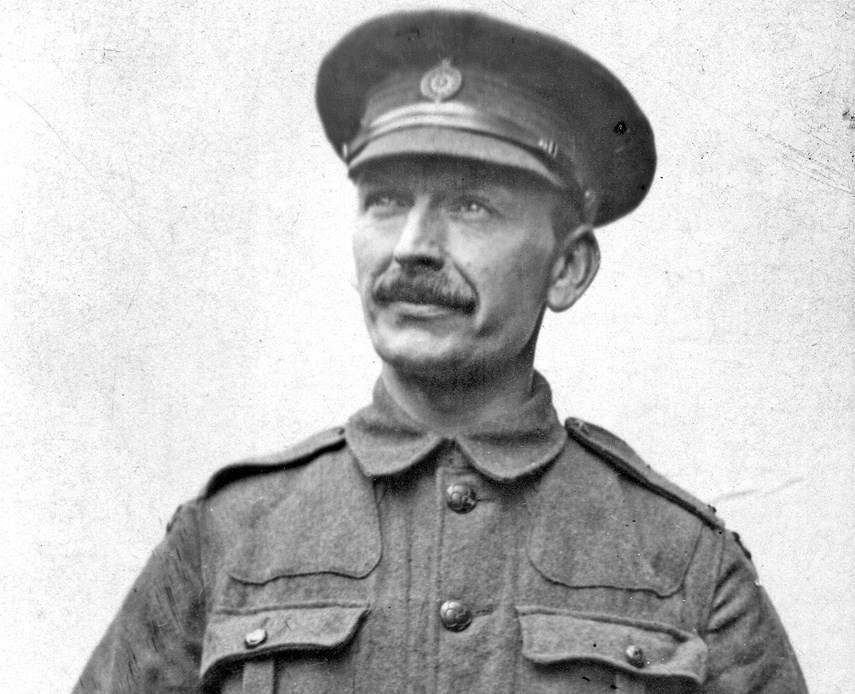The war diary begins with war nowhere in sight.
On June 28, 1914, Walter Draycott took the car over to Burnaby, introduced Mrs. Graham to Mrs. Fetherstonhaugh, and picked cherries in the garden. But at the bottom of the day’s diary entry, almost like an afterthought, Draycott mentions a single news item: “Archduke Franz Ferdinand of Austria and his wife Sophia, Duchess of Hohenberg are assassinated.”
Draycott was in the trenches by Christmas. In the spring of 1917 he was Vimy Ridge.
“He was there. The diary was there,” says North Vancouver archivist Janet Turner.
They’re small diaries, she notes. “The type of diary that would fit in the breast pocket of a uniform.”
But they’re also an unflinching personal history spanning the First World War.
In 1914, the North Vancouver Museum and Archives created a website dedicated to posting each of Draycott’s wartime entries exactly 100 years after Draycott put the words to paper. The site, called Walter Draycott’s Great War Chronicle, allows history buffs as well Lynn Valley residents who might have unknowingly shared a bench with Draycott’s bronze likeness to delve into his first-hand account of what one author termed: civilization’s first unsuccessful attempt to
exterminate itself.
Draycott’s journals stand out among personal records, Turner says.
“We don’t have a lifetime of diaries for anyone else.”
Turner also noted Draycott’s “flair
for language.”
Draycott describes a Good Friday that was “nearly my last a large shell bursts close to me.”
He recounts the bombs, the shell-shocked men, the rain and snow and mud. He sees a plane brought down in flames.
But his skill is particularly evident in his descriptions of the disorienting effect of war during his entry on the Battle of Vimy Ridge. His diary entry on April 9, 1917 begins: “One of [our?] planes shot down.”
To Draycott, Vimy Ridge was: “a regular hell on earth, truly a grand sight – for us! The semi-darkness is lit up by bursting shells, making sprays of red light.”
In all-caps, Draycott concludes: “VIMY RIDGE IS OURS.”
Shortly after Vimy Ridge, Draycott was taken to England for medical treatment. It’s at that point in 2017 that interest in the online diary seemed to wane, Turner says.
“I really think it’s fallen off just because Walter’s not doing much,” she says.
As an example, his diary from April 16, 1918 describes going for a cycle ride through Knowsley, West Derby and Knotty Ash.
“Lovely day & thoroughly enjoyable,” he writes.
Turner is hoping readers will start checking back into the diary as Draycott heads back to Canada.
“He’s not marking time,” she explains. “He begins to have a new project, a new objective, which is to go home.”
Draycott describes chopping across the sea as the “ship rolls heavily” at about four knots amid high gales and icebergs.
His account of soldiers going home is an intriguing one, Turner says, explaining that some communities seemed to embrace the train full of veterans while other seemed uniformly uninterested.
While there are tears in Winnipeg, Draycott describes being “dissatisfied & enraged” at what he felt was a cold reception in Regina.
Readers can also get some insight into what was only called shell shock at the time as Draycott attends an Armistice Day event.
“His nerves won’t take the fireworks,” Turner says, noting Draycott likely suffered some form of post-traumatic stress disorder.
The website also includes some of Draycott’s sketches as well as scans of the handwritten journals, “so people could see what it was like to try to read them,” Turner says.
It took a team of volunteers to figure out his abbreviations and decipher his handwriting, according to Turner.
While there are no plans to post further entries after Nov. 11, 1918, Draycott continued to write, describing aches and pains and what it was like to reach the age of 101 at his Lynn Valley homestead.
The diary is available at greatwarchronicle.ca/



